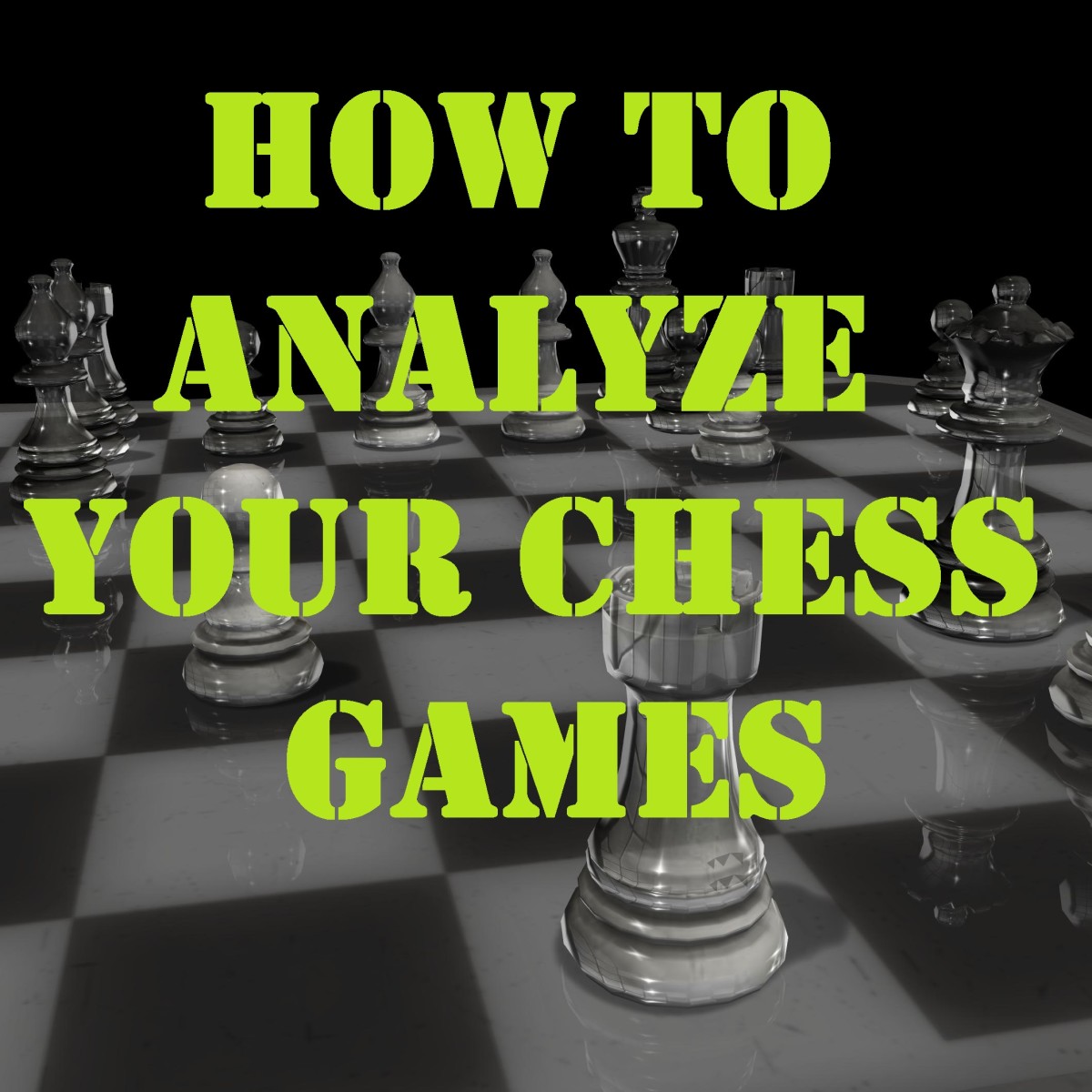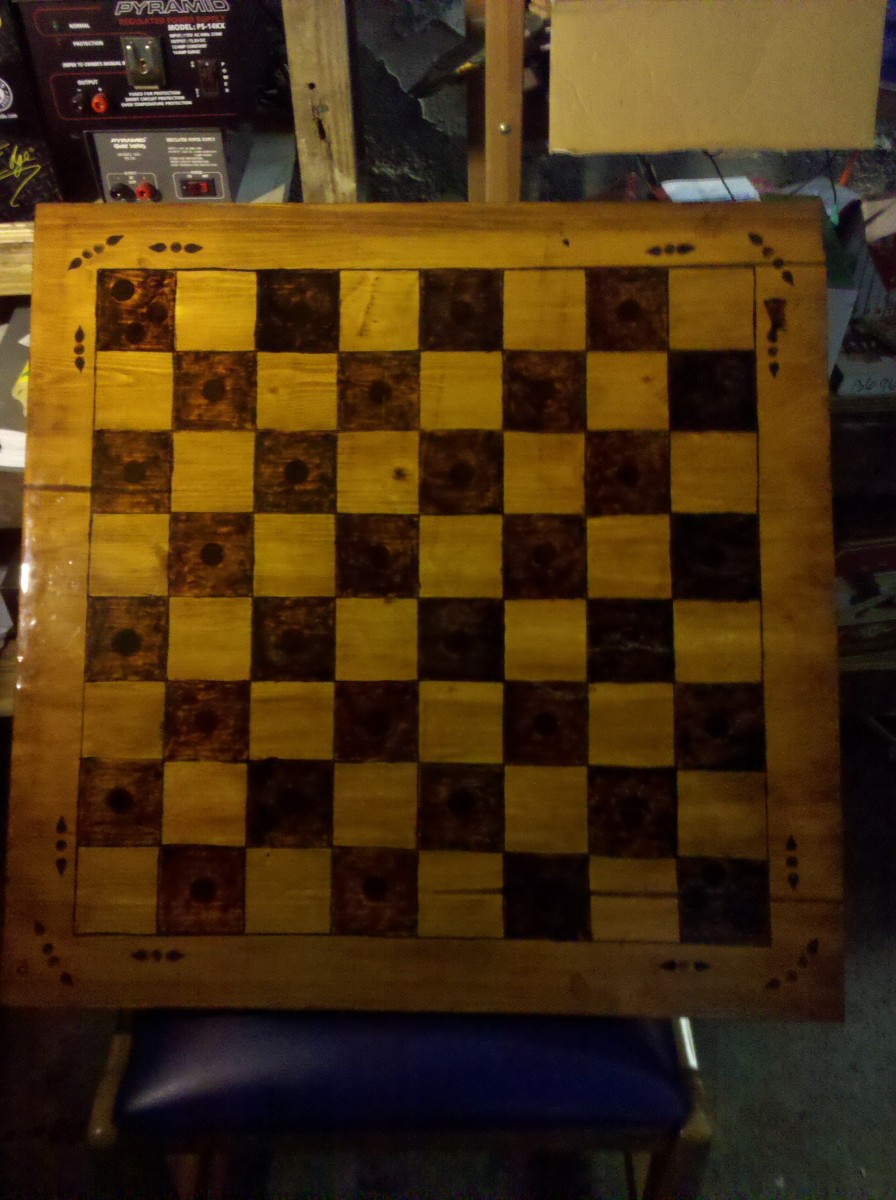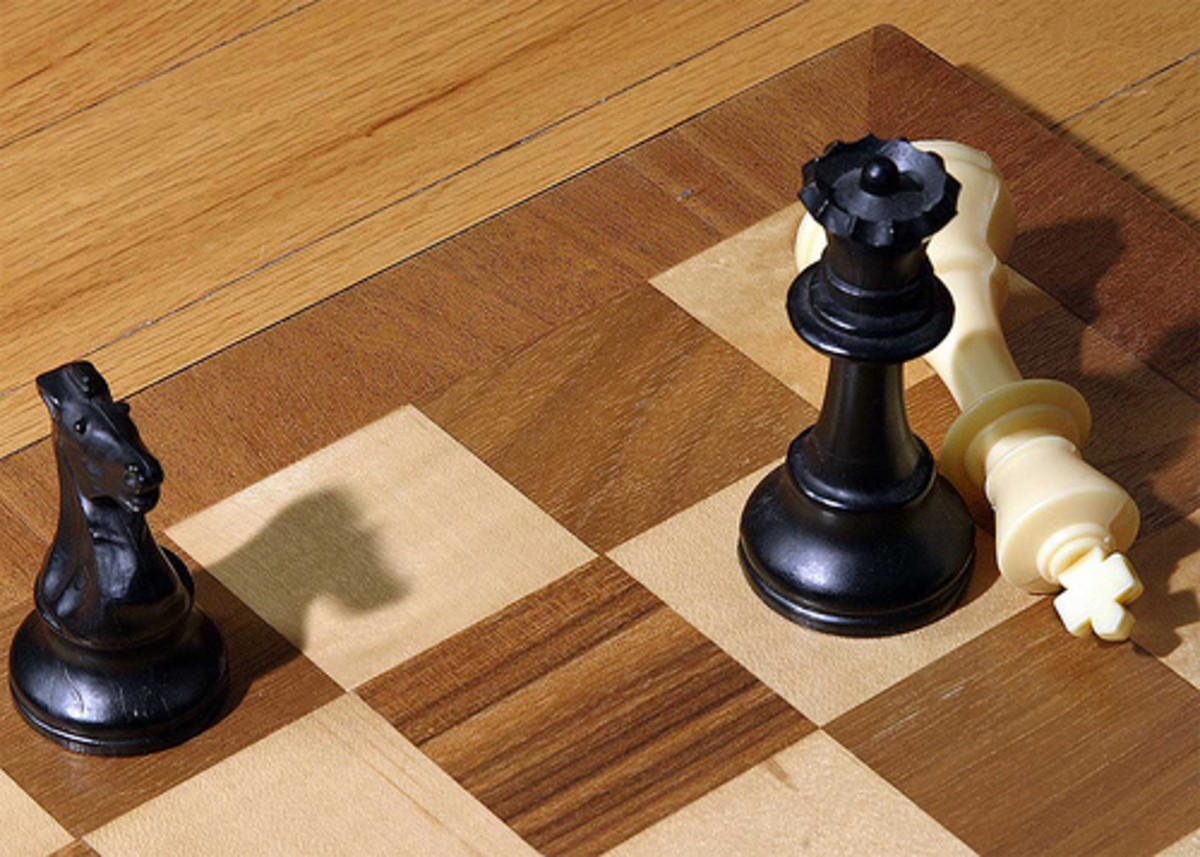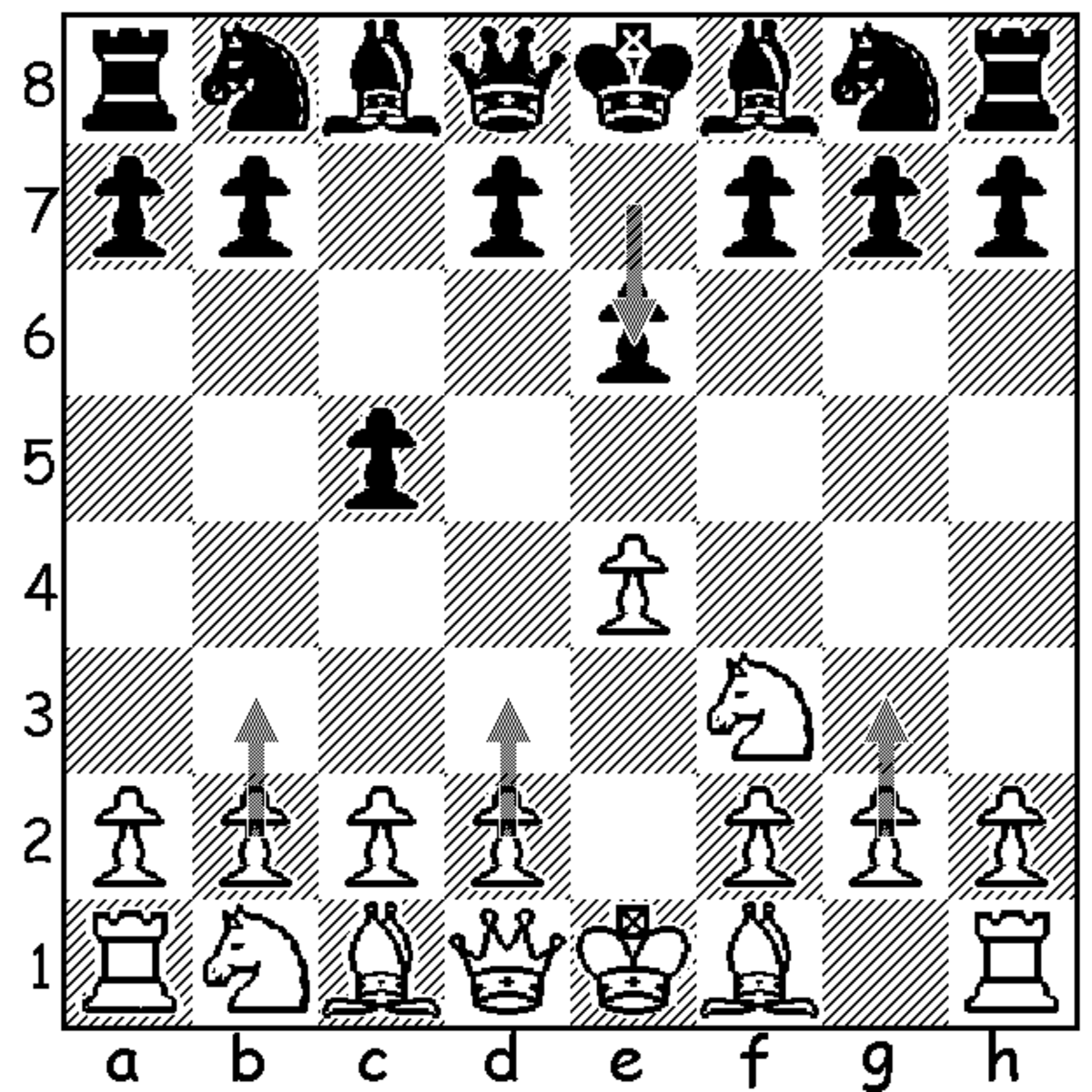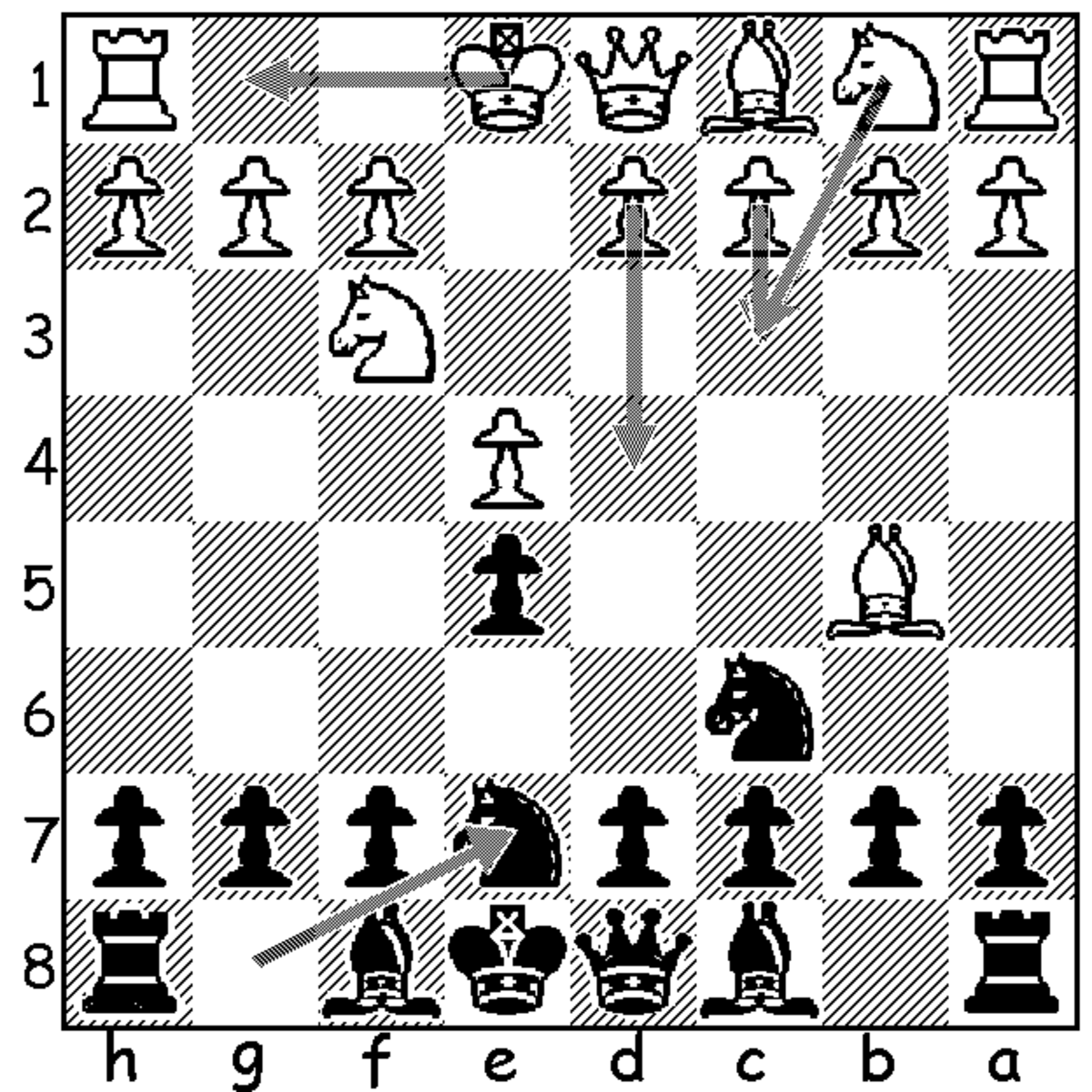Chess For Beginners; Basic Chess Rules
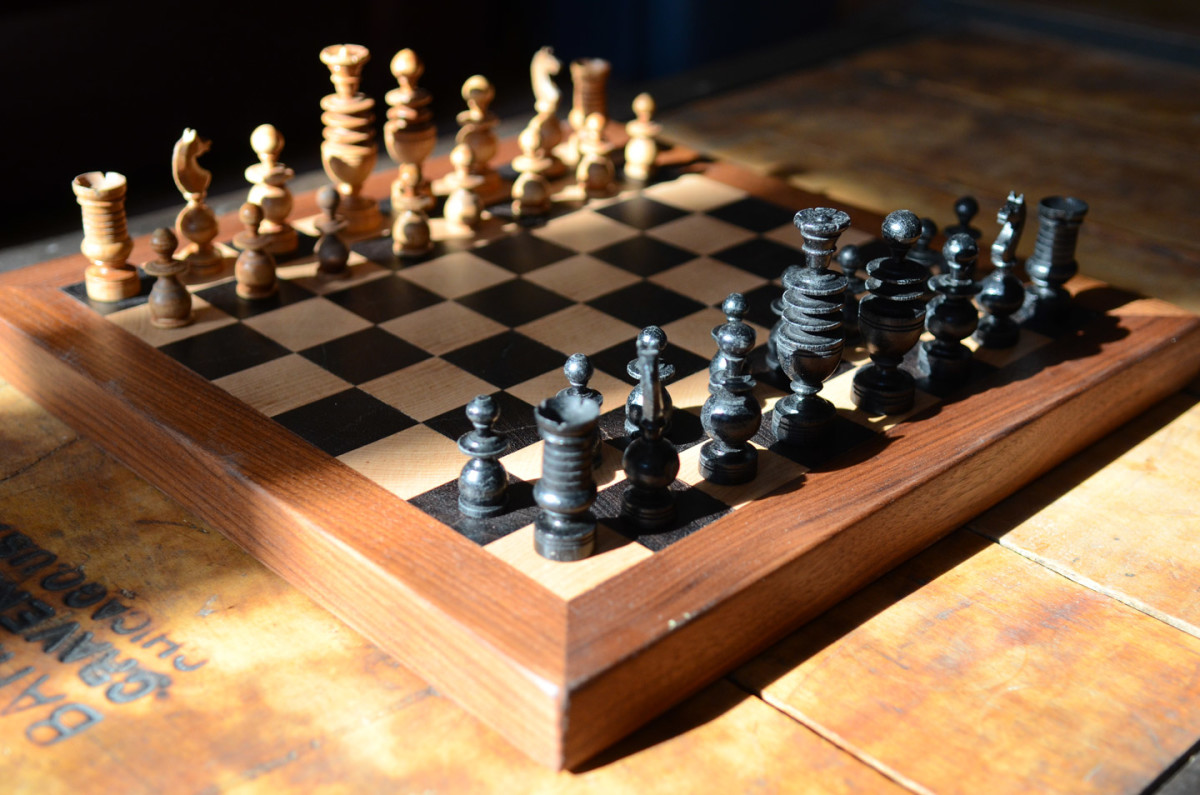
Chess: A Game For All Ages
During my years as a home-school mom, I thought it important that my children know the basics of playing chess. Although I rarely played, I had learned the basics of movement from an uncle when I was young. I taught my kids what I knew, then left them to their own devices.
Many years later, I played chess almost daily, with someone who was a much better player than me. He was patient, and I learned a lot. I would like to share some of this information with people who would like to play chess, but don't yet know how. It can be intimidating, and you don't want to sound dumb to other players. With a few basics under your belt, you can begin playing chess today.
The Chess Board
First, the board. There are four dark, and four light squares across the board. There are also four dark and four light squares down the board. Sixty four squares in all. The orientation of the board can best be remembered by this saying, "If white is on your right, the board is right." A white square should be in your lower right corner, as you face the chess board.
Each player has eight pawns, and eight pieces. The names of the pieces are: Rook (2), Knight (2), Bishop (2), Queen and King. Before setting up the board, one player should hold a pawn of each color in each hand. The second player picks a hand to determine which color each player plays. After you have drawn your colors, it is time to set up the board.
Across the back row, the pieces line up as follows; Rook, Knight, Bishop, King or Queen, Bishop, Knight, Rook. The queen always takes her color. If you are white, then your queen will be on the white square, with the king on the dark square. If you are dark, then your queen takes the dark square, and your king takes the light square.
Setting up the chess board
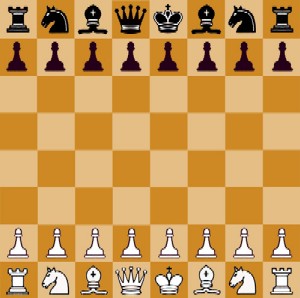
Moving the Pieces
After the pieces have been arranged, White moves first. The movement of the pawns and pieces are as follows:
Pawns: Pawns move one square at a time. Pawns have the option of moving two squares in their first move. This is the only time they may move two squares. Pawns can only advance toward the enemy side. They can never move backward. Pawns attack on the diagonal. If a piece is directly in front of your pawn, it is blocked. If a piece is on a square diagonally forward of the pawn, your pawn may attack and capture the piece.
Rooks: The Rook (the castle) can move horizontally across the board (the rank), or vertically across the board (the file). The Rook cannot move on a diagonal. It can move as many squares forward, backward, or sideways as it wants. The Rook captures an enemy piece by landing on a square occupied by the enemy. That piece is then removed.
Bishops: Bishops always move diagonally, on it's own color. Each player has a dark square Bishop, and a light square Bishop. Bishops can move forward or backward, and attack an enemy piece by landing on an occupied square.
Knights: Knights (the horse) move in an "L" shape. Knights are the only pieces that do not move in a straight line, and are able to jump over other pieces. The Knights do not capture the pieces they jump, rather, they capture the pieces they land on. The movement of the Knights is two squares in one direction, then one square to the left or right. Knights always land on the opposite color from which they start. For example, if your Knight starts on a dark square, it will move two squares in one direction (same color as it started on), then one square to the left or right (opposite color). Knights can be the trickiest player on the board.
Queen: The Queen is the most powerful piece on the chess board. She can move in any direction, diagonally, forward and backward.
King: While the Queen is the most powerful, the King is the most important. One can lose a Queen, and continue playing. When the King has been Check Mated (mated) the game is over. The King may move in any direction, front, back or diagonal. He may only move one square at a time. The King cannot move himself into check, by moving onto a square which is attacked by the enemy. The King can capture enemy pieces. When a King is in Check, measures must be taken to get the King out of Check. You must either move the King, or block the enemy attack, or capture the attacking enemy piece. No other moves may take place until the King is out of check.
With these basics of chess, you are ready to begin playing. If you have children, it is fun and easy to learn alongside them. And your ego will not likely get bruised, if everyone learns together. Upcoming hubs will share game strategy and more complex playing.
Namaste friends.
Setting Up A Chess Board
Next Article: The Opening Game
Once you've mastered chess basics, it's time to go a little further, with basic strategy. This article, Chess for Beginners, the Opening Game, will help you learn some simple strategies for your game. Enjoy!
This content is accurate and true to the best of the author’s knowledge and is not meant to substitute for formal and individualized advice from a qualified professional.
© 2010 Deborah Demander

